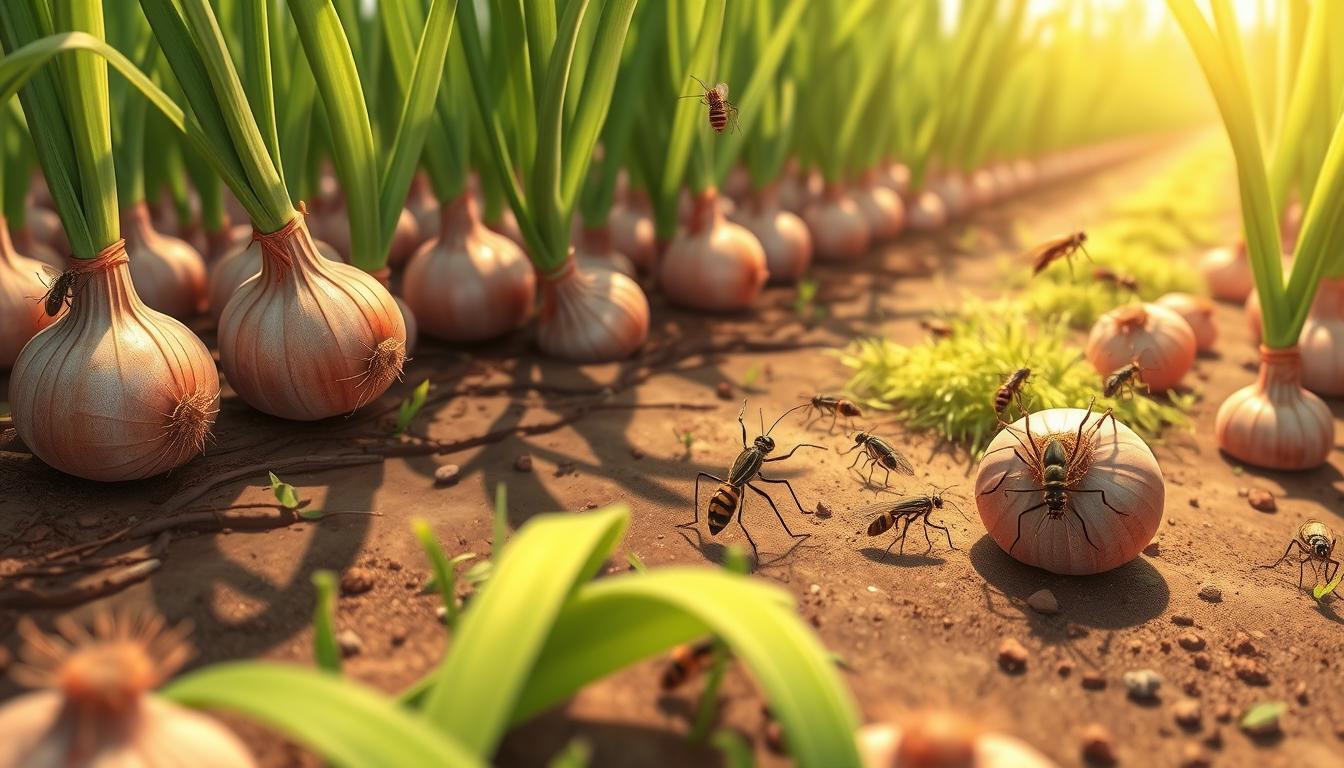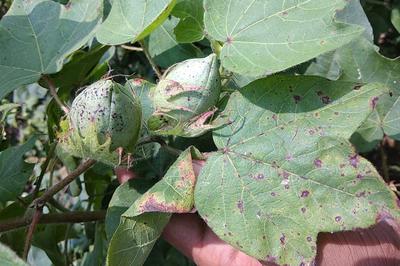Effective Onion Crop Thrips Control Methods for Farmers

By Admin
Farming is a tough job, especially when it comes to keeping onion crops healthy. Onion thrips are a big problem for farmers. These tiny pests can quickly damage our onion plants. But, with the right methods, we can control them and protect our crops.
In this article, we'll look at many ways to fight onion thrips. We'll talk about understanding these pests and using integrated pest management. We'll share practical tips to keep your onion crops safe and growing well.
Key Takeaways
- Understand the biology and life cycle of onion thrips to develop targeted control strategies
- Implement early detection and monitoring techniques to identify and address thrips infestations promptly
- Utilize a combination of chemical, biological, and cultural control methods for effective onion thrips management
- Adopt organic and sustainable approaches to thrips control, such as natural pesticides and companion planting
- Employ cost-effective and practical solutions to safeguard your onion crop and maximize yields
Understanding Onion Thrips: Biology and Life Cycle
Thrips are tiny, slender insects that can harm onion crops. To manage them well, knowing their biology and life cycle is key. We'll explore the different thrips species in onion fields, their growth stages, and when they are most active.
Identifying Thrips Species in Onion Crops
The main thrips species in onion crops are the onion thrips (Thrips tabaci) and the Western flower thrips (Frankliniella occidentalis). These can be told apart by their size, color, and how they eat. Onion thrips are smaller, about 1-2 mm long, with a yellowish-brown to greyish-brown color. Western flower thrips are a bit bigger, 1.5-2.5 mm long, and have a black and white pattern.
Life Stages and Development Patterns
- Eggs: Thrips lay their eggs on the plant, often in the leaf sheaths or on flower buds.
- Larvae: The eggs hatch into small, wingless larvae that eat the plant's leaves, stems, and flowers.
- Pupae: The larvae then go through a pupal stage, either in the soil or inside the plant, before becoming adults.
- Adults: The adult thrips have wings and can fly, spreading to new plants.
Seasonal Activity and Population Dynamics
Thrips in onion fields show clear seasonal patterns. In temperate areas, they are most active during warmer months and less so in cooler ones. Weather, like temperature, humidity, and rain, greatly affects their numbers, survival, and spread.
Knowing how onion thrips live and grow is vital for managing them. By identifying the main species, tracking their growth, and watching their seasonal patterns, farmers can better protect their onions from these pests.
Impact of Thrips Damage on Onion Production
Thrips are a big problem for onion crops. They are tiny insects that eat the leaves. This causes a lot of damage and makes the plants less healthy.
The damage from thrips can make onion bulbs smaller. This is because the plants don't get enough sunlight to grow well. Studies show that thrips can cause up to 50% yield loss in onions.
This loss is very costly for farmers. It's estimated that thrips damage costs onion growers millions of dollars each year. Thrips also make onions more likely to get sick, which adds to the problems farmers face.
Chemical Control Methods for Onion Crop Thrips Control
Chemical control is key in managing thrips in onion crops. It's part of a broader pest management plan. By using the right insecticides, applying them at the right time, and managing resistance, farmers can keep thrips away and save their onions.
Effective Insecticide Classes
Several types of insecticides work well against thrips in onions. These include thrips insecticides like spinosyns, neonicotinoids, and organophosphates. Each type targets different stages of thrips and can be switched to avoid pesticide resistance.
Application Timing and Techniques
Timing and technique are crucial for applying pesticides. Farmers should spray when thrips are most active, like during adult and larval stages. Using the right spray methods, like directed sprays, can make the pesticides more effective.
Resistance Management Strategies
To stop thrips from becoming resistant to pesticides, farmers need to manage resistance. This means changing up the pesticides, using mixes, and following application guidelines. Keeping an eye on thrips numbers and adjusting control methods helps keep pesticides working well over time.
By combining these chemical methods with a full pest management plan, onion farmers can fight thrips and save their crops from big losses.
"Responsible and judicious use of insecticides is essential for sustainable thrips management in onion production."
Cultural Control Practices and Prevention
In the fight against onion crop thrips, cultural control and prevention are key. These methods help lower thrips numbers and prevent infestations. They are vital for managing pests in a safe and effective way.
Crop Rotation Benefits
Using crop rotation is a smart move. It involves growing onions with other plants that thrips don't like. This breaks the thrips' life cycle and stops them from finding food and breeding.
This method keeps thrips numbers down and stops them from building up in fields. It's a big part of keeping pests under control.
Planting Date Optimization
When you plant onions matters a lot. By choosing the right planting date, you can avoid thrips problems. This means planting when thrips are less active.
It's all about knowing when thrips are most active. Then, you plant at a time when they're not as much of a problem.
Field Sanitation Methods
- Keeping the field clean is key to stopping thrips. Remove weeds, crop leftovers, and anything else that thrips might hide in. These places can become thrips homes or food sources.
- Watch for thrips and get rid of any plants they're on. This stops thrips from spreading and keeps them from hurting your onions.
Organic Farming Approaches to Thrips Management
Organic farmers face a challenge in managing thrips on onion crops. They use sustainable and eco-friendly methods to control thrips. This includes natural pesticides and companion planting. These strategies help keep thrips under control while protecting the organic farm's integrity.
Natural Pesticide Options
Organic thrips control uses natural pesticides from plants. These organic thrips control options include:
- Neem oil, which disrupts the life cycle of thrips and acts as a repellent
- Pyrethrin-based insecticides, derived from chrysanthemum flowers, that provide quick knockdown of thrips populations
- Spinosad, a biological insecticide produced by a soil bacterium, that is effective against thrips larvae and adults
When using thesenatural pesticides, it's crucial to follow the instructions. This ensures the pesticides work well and meet organic standards.
Companion Planting Strategies
Companion planting is a smart way to manage thrips in organic onion crops. By placing certain plants around onions, growers can keep thrips away. Some good choices include:
- Marigolds, whose strong scent can repel thrips
- Nasturtiums, which can draw thrips away from the onion crop
- Lacewing and ladybug plants, which provide a habitat for thrips predators
Using a mix of these organic thrips control methods helps farmers manage thrips. It also supports a healthy ecosystem on their farms.
Cost-Effective Management Solutions
Managing onion thrips doesn't have to cost a lot. Farmers can find affordable ways to control pests. By looking at different economic strategies, they can choose the best options for their farms.
It's important to think about the cost-benefit analysis of each method. Using affordable techniques like crop rotation and natural predators can save money. Monitoring thrips and treating only when needed also helps manage costs.

